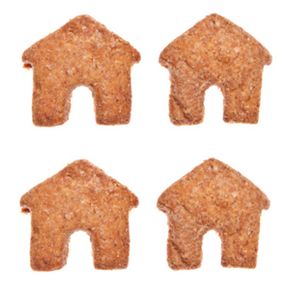Key Takeaways
- Cookie-cutter or tract housing began post-World War II to quickly and affordably address the massive demand for residential housing, with Levitt and Sons pioneering the concept by mass-producing homes on Long Island.
- These neighborhoods feature identical houses built on small lots using bulk materials and assembly-line techniques, reducing costs and construction time significantly.
- The success of this model led to widespread adoption, influencing both suburban and urban housing developments aimed at providing affordable housing options.
Most of us don't run the risk of mistaking our neighbor's home for our own. We do a lot of things to set our houses apart from each other: painting the exterior a shade of eggplant, or planting a gigantic hydrangea in front. But beyond our own touches, it's usually pretty easy to distinguish one house on your block from another because, quite simply, they're different houses. But is that always the case?
If you live in the United States -- or have seen a television show set in suburbia -- you know what cookie-cutter neighborhoods are. Identical houses equally spaced apart, with matching lawns, backyards and even landscaping, these developments are a sea of seemingly endless, indistinguishable homes.
Advertisement
And while a lot of people question the appeal of a home that you could easily confuse for your neighbors', there is a method behind the cookie-cutter madness. To get to the bottom of it, we'll trace the history of tract housing (the more real estate-friendly term for cookie-cutter neighborhoods).
It began with the post-World War II boom; suddenly, there were millions of families who now had stable employment and were ready to own their own piece of the American Dream. Unfortunately, the housing market didn't necessarily get the memo: The blue-collar income of many families simply didn't match the cost of preexisting housing. Consider the fact that a whopping 5 million residences were needed to house people by the end of 1945, due to former GIs returning home [source: Materrese].
What the United States needed was space for middle class families -- lots of it, and fast. And Levitt and Sons, a real estate investment and development company on Long Island, had a 6,000-acre land tract on an abandoned potato field that fit the bill. William Levitt (of the "Sons" part of the company) was also returning from the war and realized that small lots on big tracts could make excellent neighborhoods. In May 1947, Levitt and Sons announced that 2,000 affordable rentals would be built on their land.
Two days later, 1,000 houses were already rented. When 1948 rolled around, the Levitts were building 30 houses a day. And demand was still growing; by 1949, the Levitts realized they could start selling homes that were a bit larger but still manufactured identically and affordable. In 1951, almost 17,500 homes were built in (or very near) what came to be known as Levittown. Also known as the first cookie-cutter neighborhood.
Discover how the Levitts (and those who came after them) created these gingerbread houses from scratch on the next page.
Advertisement




